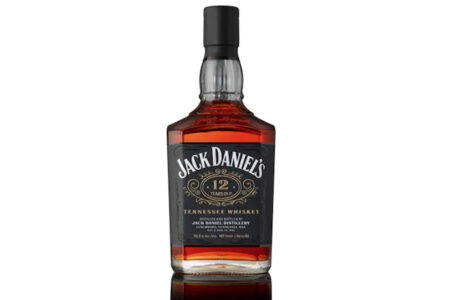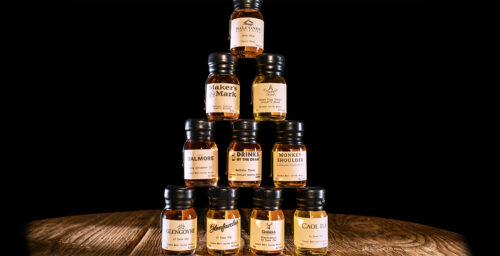Scotland is full of famous distilleries. Laphroaig, Macallan, Glenlivet—all practically household names (or at least they’re household names in the weird, whisky-centric world I live in). But those flagship distilleries are just a part of the Scotland story. For every Glenmorangie, there’s a Daluaine—an under-recognized, unloved producer with secrets left to share—and often, they’re making whisky every bit as good as their more famous brethren. So when I got the opportunity to drop in at BenRiach Distillery earlier this year while in Speyside, I took it.
Originally founded in 1898, BenRiach was unfortunately among the casualties of the Patterson Crash in 1900, just two years after it opened its doors. It then sat mothballed for 65 years except for its malting floors, which continued to operate to supply Longmorn. The latter half of the 20th century brought several owners and some intermittent closures, with little attention paid to the distillery as it changed hands, scaled back production, and quietly introduced its first single malt in the 1990s.
It wasn’t until a private consortium bought the distillery in 2004 that things really started to look up. Focusing on special releases, limited editions, unique cask finishes, and peated malts, the new owners breathed fresh life into BenRiach, drawing critical attention and winning Distillery of the Year from Malt Advocate in 2007. The BenRiach Company then acquired GlenDronach and Glenglassaugh, two other neglected Speyside distilleries, with plans to orchestrate a similar revival. Then, just last year, The BenRiach Company sold all three distilleries to Brown-Forman, marking the Kentucky firm’s first foray into Scotch whisky.
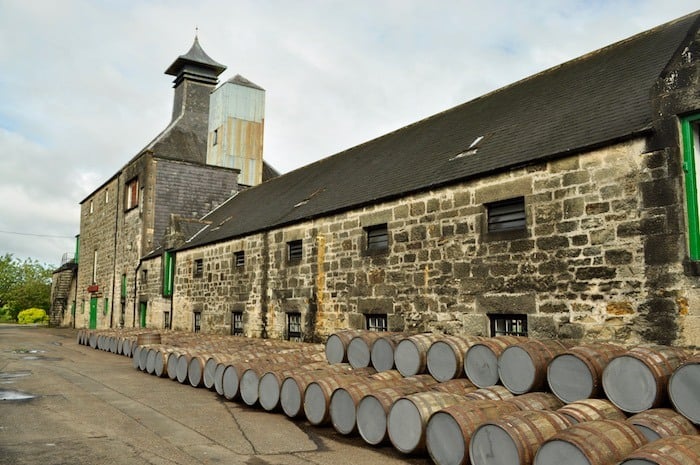
Everybody loves a good comeback story, so whisky lovers are watching BenRiach with excitement. And there’s a lot to be excited about. BenRiach has a reputation for making delicious whisky with an exceptionally broad range. It uses peated as well as unpeated malt, unusual for Speyside. And, it’s one of just a handful of Scotch producers still using floor malting, although the malthouse is only operational a few days per year. Lucky for us, we happened to visit on a day when the malting floor was in use.
The rare art of floor malting
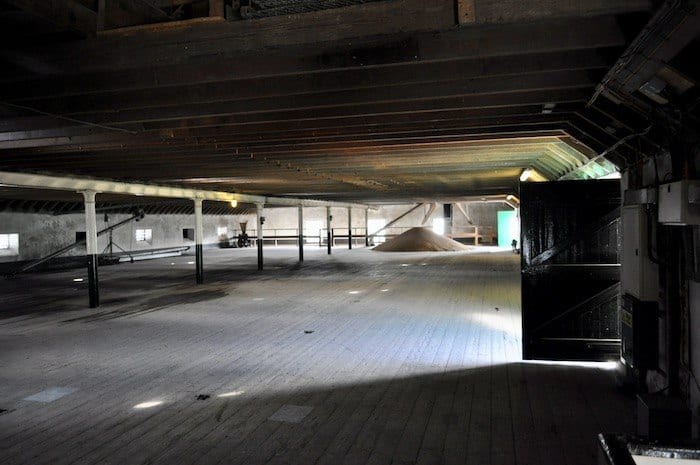
On the first story of the maltings, a pyramid-shaped heap of steeped barley waited to be spread on the weathered wooden floor. A sweet, grainy aroma filled the air. Upstairs, we watched a worker using a rototiller-like machine to spread and turn a grain bed of barley a few days farther along in the malting process. Traditional malting tools hung on the wall—rakes with wide tines, flat spade-like shovels—but today, the gas-powered turner seems to be the favored implement.
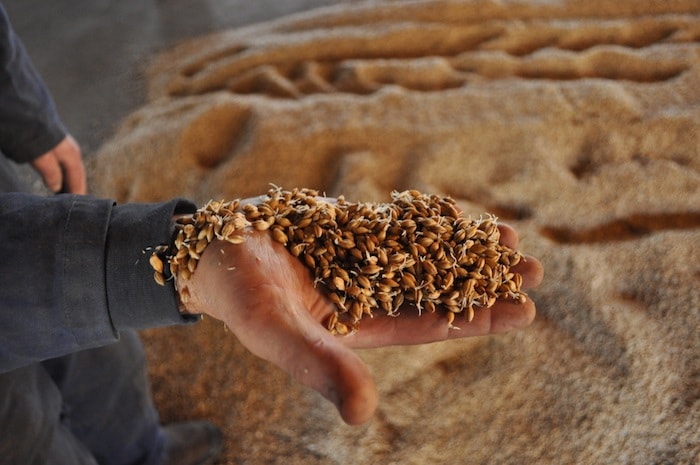
On this floor, the grains were visibly sprouting, with rootlets and acrospires beginning to emerge. The worker explained that it wouldn’t take long for the sprouts to tangle and mat, which would suffocate the grains and ruin the malt. That means somebody has to be up here turning the grain every few hours, even overnight. I asked Sandra what BenRiach did with the floor malted barley, since it produces a quantity far too tiny to meet even a week’s production needs, and she told us the floor-malted barley just goes into the regular whisky.
Continued on page 2 below


